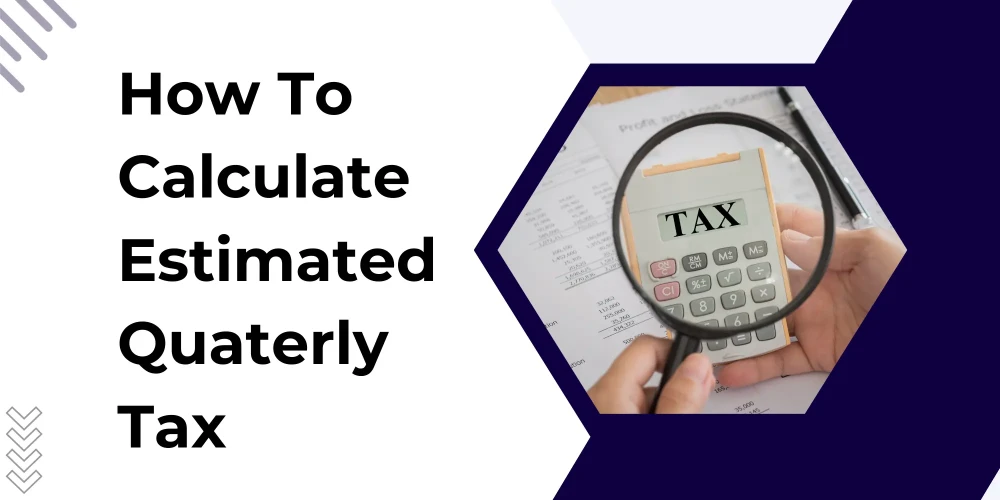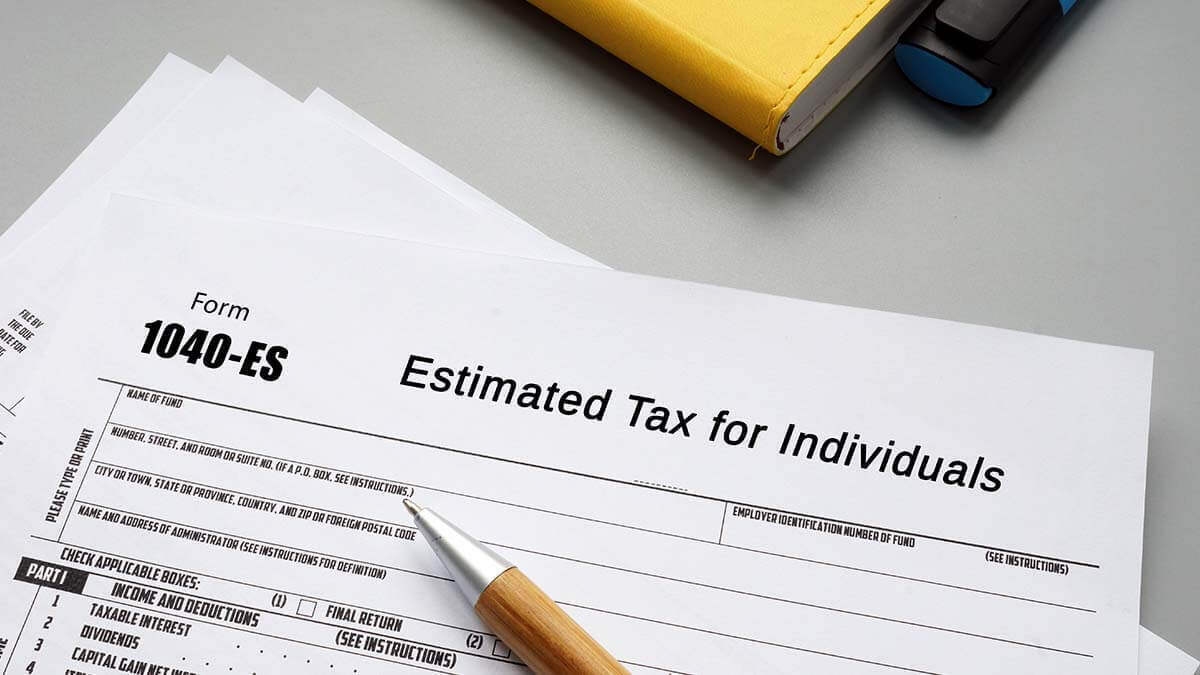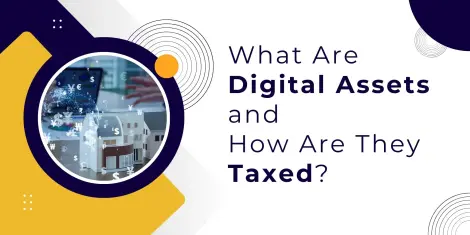Table of Contents
As a self-employed individual, independent contractor, sole proprietor, or business partner, understanding and managing your tax obligations is crucial for maintaining financial health and avoiding penalties. One of the most important aspects of this is calculating and paying your estimated quarterly taxes. In this article we will walk you through the entire process, helping you navigate the complexities of self-employment taxes with confidence.
Before diving into the calculations, it's essential to understand what estimated quarterly taxes are and why they're necessary.
What Are Estimated Quarterly Taxes?
Estimated quarterly taxes are advance payments of your annual tax liability, made four times a year. These payments include both income tax and self-employment tax (Social Security and Medicare contributions) on the profits your business generates.
Why Pay Quarterly?
Unlike traditional employees who have taxes withheld from each paycheck, self-employed individuals are responsible for setting aside and paying their taxes throughout the year. The IRS requires these quarterly payments to ensure a steady flow of tax revenue and to prevent self-employed taxpayers from facing a large, potentially unmanageable tax bill at the end of the year.
Who Needs to Pay Estimated Quarterly Taxes?
Not everyone who earns self-employment income is required to make quarterly tax payments. The IRS has specific criteria to determine who should pay:
- You expect to owe $1,000 or more in taxes when you file your return, after subtracting withholding and refundable credits.
- You expect your withholding and refundable credits to be less than:
- 90% of the tax to be shown on your current year's tax return, or
- 100% of the tax shown on your previous year's tax return (110% if your adjusted gross income was more than $150,000, or $75,000 if married filing separately)
Types of Income Subject to Estimated Taxes
Estimated taxes apply to various forms of income, including:
- Self-employment earnings
- Interest income
- Dividends
- Capital gains
- Rental income
- Alimony
Even if you're a salaried employee, you might need to pay estimated taxes if the amount withheld from your paycheck doesn't cover your full tax liability.
How to Calculate Estimated Quarterly Taxes
While the IRS provides forms to help with these calculations, the process can be complex, especially for those with fluctuating income. Here's a step-by-step guide to help you through it.
Step 1: Estimate Your Annual Taxable Income
The first step is to project your taxable income for the year. This can be challenging, especially for new businesses or those with irregular income. Here are some approaches:
- For established businesses with steady income: Use last year's income as a baseline, adjusting for any expected changes.
- For new businesses or those with fluctuating income: Make your best estimate based on current contracts, projected sales, and market conditions.
Remember, this is an estimate. You'll have the opportunity to adjust your payments each quarter if your income differs from your projections.
Step 2: Calculate Your Adjusted Gross Income (AGI)
Once you have your estimated gross income, you'll need to calculate your Adjusted Gross Income (AGI). This involves subtracting any applicable deductions from your gross income. Common deductions for self-employed individuals include:
- Home office expenses
- Health insurance premiums
- Retirement plan contributions
- Half of your self-employment tax
- Business-related travel expenses
- Depreciation of business assets
It's crucial to keep detailed records of all your business expenses throughout the year to maximize your deductions and accurately calculate your AGI.
Step 3: Determine Your Tax Liability
With your AGI calculated, you can now determine your tax liability. This involves two main components:
- Income Tax: Apply the appropriate tax rate to your AGI. Remember that the U.S. uses a progressive tax system, so different portions of your income may be taxed at different rates.
- Self-Employment Tax: This covers your Social Security and Medicare contributions. The calculation is as follows:
- Multiply your estimated net earnings by 92.35% (this adjustment is made because the employer portion of the self-employment tax is deductible)
- Apply the self-employment tax rate of 15.3% to this amount (12.4% for Social Security on the first $142,800 of earnings as of 2021, and 2.9% for Medicare on all earnings)
Step 4: Factor in Tax Credits
Don't forget to account for any tax credits you may be eligible for. Common credits for self-employed individuals include:
- Child and Dependent Care Credit
- Retirement Savings Contributions Credit
- Health Coverage Tax Credit
These credits can significantly reduce your tax liability, so it's worth researching which ones apply to your situation.
Step 5: Calculate Your Quarterly Payments
Once you have your total estimated tax liability for the year, simply divide it by four to determine your quarterly payment amount. However, if your income varies significantly from quarter to quarter, you may want to use the annualized income installment method, which allows you to make uneven payments based on your income for each period.
Practical Example:
Let's walk through an example to illustrate the process of calculating estimated quarterly taxes for a self-employed individual.
Meet Sarah, a freelance graphic designer. Here are her details:
Estimated annual gross income: $80,000
Estimated business expenses: $15,000
No other income sources
Step 1: Estimate Annual Taxable Income
Sarah's estimated taxable income = Gross income - Business expenses
$80,000 - $15,000 = $65,000
Step 2: Calculate Adjusted Gross Income (AGI)
For simplicity, let's assume Sarah has no other adjustments to her income.
AGI = $65,000
Step 3: Determine Tax Liability
Income Tax:
Using 2021 tax brackets for a single filer:
$9,950 x 10% = $995
($40,525 - $9,950) x 12% = $3,669
($65,000 - $40,525) x 22% = $5,384.50
Total Income Tax = $995 + $3,669 + $5,384.50 = $10,048.50
Self-Employment Tax:
Net earnings = $65,000 x 92.35% = $60,027.50
Self-employment tax = $60,027.50 x 15.3% = $9,184.21
Total estimated tax liability = Income tax + Self-employment tax
$10,048.50 + $9,184.21 = $19,232.71
Step 4: Factor in Tax Credits
Let's assume Sarah qualifies for a $1,000 tax credit.
Adjusted tax liability = $19,232.71 - $1,000 = $18,232.71
Step 5: Calculate Quarterly Payments
Divide the adjusted tax liability by 4:
$18,232.71 ÷ 4 = $4,558.18
Therefore, Sarah should plan to pay approximately $4,558 in estimated taxes each quarter.
When and How to Pay Your Estimated Taxes
Understanding when and how to make your payments is just as important as calculating the correct amount.
Payment Due Dates
For most taxpayers, estimated tax payments are due on the following dates:
- April 15 (for income received Jan. 1 to March 31)
- June 15 (for income received April 1 to May 31)
- September 15 (for income received June 1 to Aug. 31)
- January 15 of the following year (for income received Sept. 1 to Dec. 31)
Note: If any of these dates fall on a weekend or holiday, the due date is moved to the next business day.
Payment Methods
The IRS offers several convenient ways to make your estimated tax payments:
- Online: Through the IRS's Electronic Federal Tax Payment System (EFTPS)
- By phone: Using the IRS2Go mobile app
- By mail: Sending a check or money order with Form 1040-ES
- Credit or debit card: Through an approved payment processor (fees may apply)
Many taxpayers find it helpful to set up automatic payments through EFTPS to ensure they never miss a deadline.
How to Manage Estimated Tax Payments
Managing your estimated tax payments can be challenging, especially if you have irregular income. Here are some strategies to help you stay on top of your tax obligations:
- Set Aside a Percentage of Each Payment
As soon as you receive payment for your work, set aside a portion for taxes. A common rule of thumb is to save 25-30% of your income for taxes, though your actual percentage may vary based on your tax bracket and deductions.
- Use a Separate Bank Account
Consider opening a separate savings account specifically for your tax payments. This can help you resist the temptation to use this money for other purposes and ensure you have the funds available when it's time to pay.
- Make More Frequent Payments
While quarterly payments are the standard, nothing prevents you from making more frequent payments if that suits your cash flow better. Some self-employed individuals prefer to make monthly or even weekly tax payments to make the expense more manageable.
- Adjust Your Estimates as Needed
Remember, these are estimated payments. If your income changes significantly during the year, you can (and should) adjust your future payments accordingly. This can help you avoid underpayment penalties or overpaying throughout the year.
- Consider Using Accounting Software
Many accounting software packages designed for small businesses and self-employed individuals can help you track your income, expenses, and estimated tax obligations. Some can even calculate and remind you of your estimated tax payments.
Common Pitfalls and How to Avoid Them
Even with careful planning, there are several common mistakes that self-employed individuals often make when it comes to estimated taxes. Here are a few to watch out for:
- Underestimating Your Tax Liability
It's better to slightly overestimate your taxes than to underestimate them. If you underpay, you may face penalties and interest charges.
- Forgetting About State Taxes
Don't forget that you may also need to make estimated tax payments to your state. Check with your state's tax agency for specific requirements.
- Missing Payment Deadlines
Set reminders for yourself well in advance of the payment due dates. Missing a deadline can result in penalties, even if you file for an extension on your annual return.
- Not Keeping Accurate Records
Detailed record-keeping is crucial for accurately calculating your income and deductions. Make it a habit to track all business income and expenses throughout the year.
- Failing to Adjust for Life Changes
Major life events like getting married, having a child, or buying a home can significantly impact your tax situation. Be sure to factor these changes into your estimated tax calculations.
When to Seek Professional Help
While many self-employed individuals manage their estimated taxes on their own, there are situations where it may be beneficial to seek the help of a tax professional:
- If you're new to self-employment and unsure about the process
- If your business structure changes (e.g., from sole proprietorship to LLC)
- If you have a particularly complex tax situation (e.g., multiple income sources, international income)
- If you've had issues with underpayment or overpayment in the past
- If you simply want the peace of mind that comes with professional assistance
A qualified tax professional can not only ensure you're meeting your tax obligations but can also help you identify deductions and credits you might have overlooked, potentially saving you money in the long run.
Conclusion
Calculating and paying estimated quarterly taxes is an essential part of managing your finances as a self-employed individual. While it may seem daunting at first, with careful planning, professional help and a systematic approach, you can stay on top of your tax obligations and avoid unnecessary penalties.
NSKT Global offers comprehensive tax services tailored to self-employed individuals and small businesses. Our team of experienced tax professionals can help you accurately calculate your estimated quarterly taxes, identify all applicable deductions and credits, and ensure timely payments. We stay up-to-date with the latest tax laws and regulations, providing you with peace of mind and potentially saving you money in the long run.
Whether you're new to self-employment or looking to optimize your tax strategy, NSKT Global is here to support your financial success.








